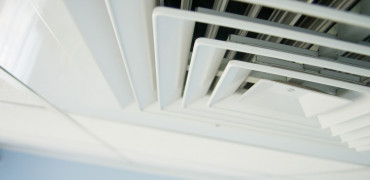Mike Egan, Mitsubishi Electric Business Development Manager, considers the challenge faced by university engineering and FM teams as they optimise the energy and carbon performance of a range of buildings across UK campuses.
One of the main challenges university engineering and FM teams face is that a modern university campus is as mixed in building age and type as any town or city.
There may be offices and facilities for teaching, but also specialist laboratories and extensive libraries.
Student accommodation is found alongside facilities such as gyms and swimming pools. It is also increasingly likely that a modern university will have data centre facilities on-site.
This presents university engineering and facilities teams with numerous maintenance issues.
It’s a continuous job where time and effort must be carefully balanced with budgets.
We can also add carbon reduction strategies to that mix, as many universities look to reduce the carbon footprint of their buildings.
The key is to match those carbon reduction objectives with the needs of each building
HVAC is key to the carbon footprint
Building services such as heating, cooling and hot water are key considerations in reducing any campus’s carbon footprint.
But, from an HVAC point of view, each building type on campus has different requirements for heating, hot water and cooling. They also have different patterns of occupation and use.
Each must be considered against the backdrop of opportunities for optimising energy use and applying low-carbon solutions wherever possible.
Historic buildings
And let’s not overlook the age range of university buildings as another significant factor.
There are some outstanding examples of new-build, low-carbon university buildings, but the challenge lies in enhancing the performance of the existing stock.
Around 20% of the university estate was built before 1914, and this group includes some historical and listed buildings.
But while older buildings require specialist care and maintenance, they may not necessarily be the most challenging in terms of maintaining performance.
The largest portion of the estate (32%) was built during the university growth boom of the 1960s and 1970s and these can often be the most problematic in terms of energy and carbon performance.
The challenge of the new
Even relatively new buildings have their challenges.
The past two decades have seen new university buildings spring up, representing around 25% of the UK’s estate.
Many of these new facilities have been designed for low embodied and operational carbon along with energy efficiency.
However, modern buildings present issues for facilities teams. For example, they may house data centres which use significant amounts of energy or may simply be used more often and for longer hours than older buildings because of their enhanced facilities.
Modern HVAC technology goes a long way to helping alleviate these challenges. Working with expert advisors, university engineering teams can go further with carbon and energy savings from their heating, cooling and hot water systems.
The key is to match those objectives with the needs of each building.
Specifying the right solution
For example, heat pumps are an obvious solution to decarbonising heating and hot water on campus.
They’re now available in a range of solutions that can meet the needs of a range of buildings from offices to student accommodation and even leisure facilities.
But we should be realistic about specifying the ‘obvious’ solution.
Not all buildings need hot water at volume, and some older structures may not be suited to heat pump solutions.
In this case, it could be more sensible to consider VRF air conditioning as a replacement for a gas boiler, for instance.
VRF has a small footprint and is a great solution for projects that are being managed in stages. For example, floor-by-floor updating of an office building that needs heating and cooling but not much domestic hot water.
Horses for university courses
The infographic here shows the potential range of solutions for a university campus and gives an indication of the solutions available.
Modern equipment can provide cost-effective solutions that deliver low-carbon systems and reduce energy waste while providing better indoor environments for staff and students alike.
The time invested in working with experts in energy-efficient and low-carbon solutions can pay long-term dividends.
Mitsubishi Electric can help your in-house facilities and engineer teams spot potential areas for savings you may have yet to consider.
Mike Egan, Business Development Manager




